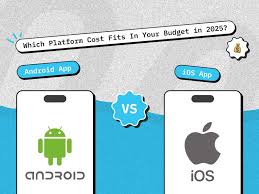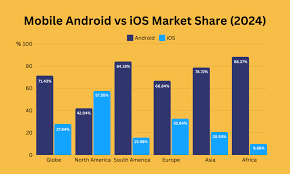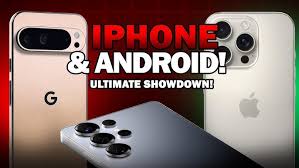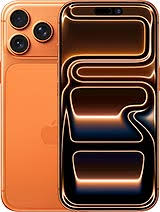Introduction — iPhone vs Android 2025:
iPhone vs Android 2025, iPhone 2025, Android 2025, best smartphone 2025, which phone to buy 2025 — if those search terms brought you here, you’re in the right place. In 2025 the smartphone market is more advanced and more crowded than ever: Apple continues its yearly iPhone refresh while Android OEMs push cutting-edge displays, powerful AI features and specialty hardware (foldables, Ultra cameras, extreme gaming phones). This guide breaks down the differences that matter — operating system, hardware, camera performance, battery life, software updates, AI features, repairability, ecosystem, price, and who should pick which platform. We’ll also look at the latest platform news (Apple’s roadmap and Android 16 developments) so your 2025 purchase is future-proof.
Quick summary: Who wins overall?
- Pros iPhone (2025): Best-in-class optimization, long software support, strong resale value, optimized apps, tight hardware-software integration, growing AI features in iOS.
- Pros Android (2025): Wider hardware choice (foldables, ultra-zoom, gaming), faster adoption of experimental features, broader price range and value options, more hardware innovation.
- Overall verdict: There is no single “winner” — the right choice depends on your priorities (ecosystem, customization, camera needs, price). This guide explains how to pick.
The 2025 landscape: What’s new this year?
Apple: iPhone 17 & roadmap:
Apple is on a multi-year update plan. The iPhone 17 series is widely expected to debut in September 2025 with new Air/Pro variants and system updates (iOS 26 rumored). Industry coverage indicates design refinements, improved performance and possibly new form factors in future years (foldables in 2026). These roadmap moves influence whether to wait or buy now.

— Android: Android 16 & QPR updates:
Android 16 is the current major release with features aimed at pro media workflows (APV codec), improved privacy, and developer APIs; Google is already rolling QPR2 beta updates. Android OEMs have shipped new flagships in 2025 (Galaxy S25 series, Pixel followups) that push camera, display, and AI experiences.
Design & hardware: Build quality, materials, and form factors
— iPhone in 2025:
Apple continues premium materials (titanium on Pro models, refined glass) with emphasis on thinner bezels and camera improvements. If you prefer build consistency and best-in-class finishes, iPhone remains a top pick. Recent coverage highlights Apple’s move to diversify design over the next 3 years.
— Android in 2025:
Android offers variety: ultra-thin glass phones, rugged gaming slabs, foldable displays, and phones with extreme camera periscopes. This means you can pick a device tailored to your needs — foldable for multitasking, gaming phone for high refresh rates and extra cooling. Tom’s Guide and other reviewers highlight Galaxy S25 Ultra and other 2025 Android flagships as top hardware examples.
— Display, refresh rates & media experience:
- iPhone: Consistent color calibration, strong HDR, ProMotion (120Hz) on Pro models; Apple’s displays are tuned for accurate color and efficiency.
- Android: Offers higher refresh rates (up to 240Hz on gaming phones), variable refresh and top brightness OLED/Mini-LED options, and sometimes larger screens or foldables for multitasking and media.
If you’re a content creator or heavy gamer, Android’s display variety may be more compelling; if you want faithful colors and smooth integration, iPhone shines.
Performance & chipsets:
— Apple silicon (2025):
Apple’s A-series chips continue to excel on single-thread and GPU tasks thanks to tight hardware/software integration—delivering strong, energy-efficient performance for gaming, video editing, and AI features. Rumors about newer chips (A19 or A18 Pro, depending on Apple’s cadence) suggest incremental improvements in 2025.
— Android silicon (2025):
Android flagships use Qualcomm’s latest Snapdragon series, MediaTek Dimensity flagship chips, and custom silicon on selected devices. Qualcomm and MediaTek focus on on-device AI, faster NPUs and multi-core GPU gains. For multi-core and GPU-heavy multi-tasking, high-end Android silicon competes strongly. Benchmarks in 2025 show flagship Androids pushing new performance records.
Software & updates: iOS vs Android in 2025:
— iOS (stability & long updates):
Apple’s advantage is predictable, multi-year major iOS updates for older devices (often 5–7 years). This makes iPhone an excellent long-term investment. iOS’s privacy focus and app optimization remain strong selling points. Recent reports on iOS roadmap (iOS 26 for iPhone 17) show Apple’s three-year plan to evolve hardware and software in lockstep.

— Android (flexibility & variance):
Android 16 and subsequent QPRs bring advanced APIs and features, but update speed varies by OEM. Google’s Pixel line tends to get faster updates, while many manufacturers now promise multiple OS upgrades (3–4 major versions and longer security support), narrowing the gap. Android’s customization freedom remains its most compelling software advantage.
AI: On-device intelligence, assistants & features:
2025 is the year on-device AI became mainstream. Both platforms incorporate AI capabilities for camera enhancements, predictive keyboards, photo editing, and system automation.
- iPhone (iOS AI): Apple has expanded on-device intelligence for photos, Siri improvements, and privacy-preserving models.
- Android (AI & OEMs): Android 16 and OEMs are pushing pro video codecs, AI editing, and system APIs for developers — plus Google’s generative tools in Pixel devices.
If you prioritize experimental AI features and rapid innovation, Android OEMs often ship new AI experiences sooner; if you prioritize privacy and integrated AI, Apple remains attractive.
Cameras: Real-world photography & video in 2025:
- iPhone: Known for natural color science, cinematic video, ProRes and computational photography. Apple’s new generations keep improving low-light and video workflows.
- Android: Offers variety — periscope telephoto, higher megapixel sensors, and pro camera modes. 2025 flagships from Samsung, Google and others compete strongly in DxOMark and real-world tests. Evaluate by sample shots; Android often wins at zoom range while iPhone often wins for consistent video processing.
Battery life, charging & battery health:
- iPhone: Often optimized for daily use with balanced battery and power management. Apple’s batteries and battery health management keep devices usable for years. MagSafe and improved charging standards continue to be part of Apple’s ecosystem.
- Android: Leading Android phones may offer larger batteries and faster wired charging (100W+ on some models) and more aggressive battery capacities for heavy use, but battery longevity varies by OEM tuning.
If quick top-ups matter, Android’s fast charging wins; if long-term battery health matters, Apple’s optimization is a major plus.
Ecosystem & services: The invisible advantage:
One of the biggest non-technical differences is ecosystem:
- Apple: Tight integration across iPhone, iPad, Mac, Apple Watch, and services (iCloud, FaceTime, iMessage). If you own other Apple devices, the experience is seamless.
- Android: More fragmented but flexible—Android integrates well with Windows, Google services, and many IoT devices. Choose Android if you want more device choices and cross-platform flexibility.
Ecosystem lock-in matters — if you already invested in apps and accessories, switching cost is high.
Privacy & security:
- iPhone: Apple markets privacy strongly — App Tracking Transparency, on-device processing, and consistent security updates make iOS a privacy leader.
- Android: Google has improved privacy controls and Android 16 adds more developer APIs for privacy. However, the platform’s openness makes privacy posture more dependent on OEMs and user settings.
Repairability & longevity:
- iPhone: Historically repairs are easier through Apple Authorized Service Providers and Apple’s Self Service Repair program is expanding. Resale value remains high.
- Android: Varies widely: some OEMs make modular repair easier; others are harder to service. Budget Androids often have lower resale values.
If you plan to keep a phone 4–6 years, factor in software support and repair options.
Price & value: Flagship vs midrange vs budget:
- iPhone flagships remain premium priced; base iPhone models (non-Pro) are Apple’s value entry.
- Android covers the full range — from budget phones to ultra-premium flagships. In 2025, Android offers better midrange value (high refresh displays, capable cameras) while Apple’s midrange (iPhone SE-style models) target a different buyer.
If value per dollar is your metric, Android often offers better midrange choices. If long-term value (resale + support) matters, iPhone can be more cost-effective.
Real world comparison: iPhone 16/17 vs top Android flagships 2025:
Leading Android flagships (Galaxy S25 Ultra, Pixel 10/10 Pro, OnePlus 14 Pro, and top gaming phones) and Apple’s iPhone 16/17 series represent the best of both worlds. Benchmarks and reviews in 2025 show narrow margins: Android leads in raw hardware specs and variety, Apple leads in optimized performance and coherent software experience. For up-to-date model-specific tests see Tom’s Guide and MacRumors coverage.
Future trends to consider before buying in 2025:
- Foldables are maturing — wait a year if you want a more polished foldable experience.
- On-device AI acceleration — invest in phones with strong NPUs for future features.
- Sustainability & repairability — manufacturers are moving toward easier repairs and longer software commitments.
- Apple’s 3-year plan & foldable iPhone in 2026 may influence waiting decisions for Apple enthusiasts.
Recommended models by category (2025):
- Best iPhone flagship: iPhone 16 Pro / iPhone 17 Pro (depending on release timing) — exceptional ecosystem & camera.
- Best Android flagship: Galaxy S25 Ultra / Pixel flagship 2025 — top camera and hardware.
- Best midrange: Android devices offering Snapdragon/ Dimensity mid-to-high chips.
- Best budget: Value Android models from Xiaomi/ Realme/itel in many markets.
Final verdict: Which one should you buy in 2025?
- Buy iPhone if: you prioritize long software support, integrated ecosystem (Mac/iPad/Watch), privacy, and consistent camera/video workflows.
- Buy Android if: you want hardware variety (foldable, telephoto), top value for money, bleeding-edge features, and flexibility in customization.
Ultimately: pick the device that solves your daily needs — not one that looks best on paper.
internal links:
- Best Classified Website Online Sell and Purchase
- Home 12
- Honda City 2026 upcoming modal features and news
External Sources:
- MacRumors: When Is iPhone 17 Coming Out? (iPhone 17 expectations & timeline). MacRumors
- Bloomberg: Apple’s 3-Year Plan to Reinvent the iPhone (roadmap). Bloomberg.com
- Android Developers: Android 16 features summary. Android Developers
- Android Developers Blog: Android 16 QPR2 Beta notes. Android Developers Blog
- Tom’s Guide: Best Android phones 2025 reviews & rankings. Tom’s Guide
- Netguru / industry analyses on iOS vs Android trends. Netguru




Leave a Reply